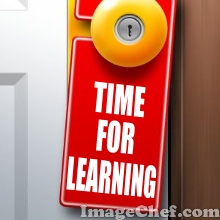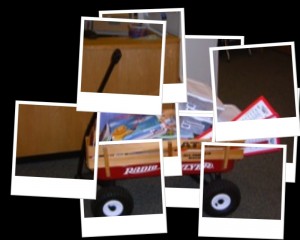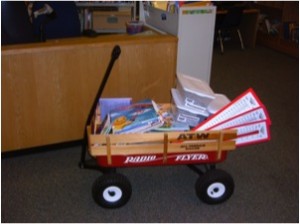We’ve had a cold spring, but finally the ground is warming up. As the sun set last night, my husband and I put in a small garden: tomatoes, squash, okra, eggplant, and melon plants and some bean seeds. Overnight we had some welcome rain and the corn in the farmer’s field behind our house appears to have grown a foot. Another farmer nearby has planted a field of potatoes, and my husband chuckles when he remembers the first time I dug up potatoes. I thought I had found buried treasure as right below the ordinary surface of the garden, I uncovered these rounded jewels. A garden provides these small surprises almost daily. I will eagerly watch that row of bean seeds for the delight of those first, green leaves. I believe we put in a garden as much for these small daily gifts as for the vegetables we hope to harvest.
Where I’ve been fortunate to be a part of a “culture of collaboration,” I have found the same sort of delight in planning with other professionals. There’s the same sense of putting your hands in the dirt and coming up with nuggets of great ideas that will nourish the learning of our students. Or, planting seeds of lesson ideas and walking into a classroom several days later to discover they have sprouted into student projects on walls and desks. Or, receiving an unexpected rain of support from an administrator, who recognizes the importance of collaboration and allows it to grow in unexpected ways.
Often, I believe it’s the small gifts that cultivate and sustain a collaborative culture. When we meet face-to-face, there is the chocolate on the table, the family photographs someone shares from their phone, or the humorous classroom anecdote shared by a teacher. It’s quite simply the laughter, the raised eyebrows, and the sharing of a time and a space.
Many of my collaborations today take place online. It’s exciting to meet with colleagues around the country or in Australia. We share documents in GoogleDocs or Dropbox. But I often find myself wondering online, “where’s the chocolate?” or “what small gifts might I offer to sustain this relationship?” Because ultimately, while the collaboration is task-oriented, it’s the relationships that provide the rich soil, sunlight, and rain needed to nourish and grow that work. Relationships provide the medium for collaboration. They are the heart and the chocolate, and we need to find the small ways to nourish those relationships whether it’s face-to-face or online.






